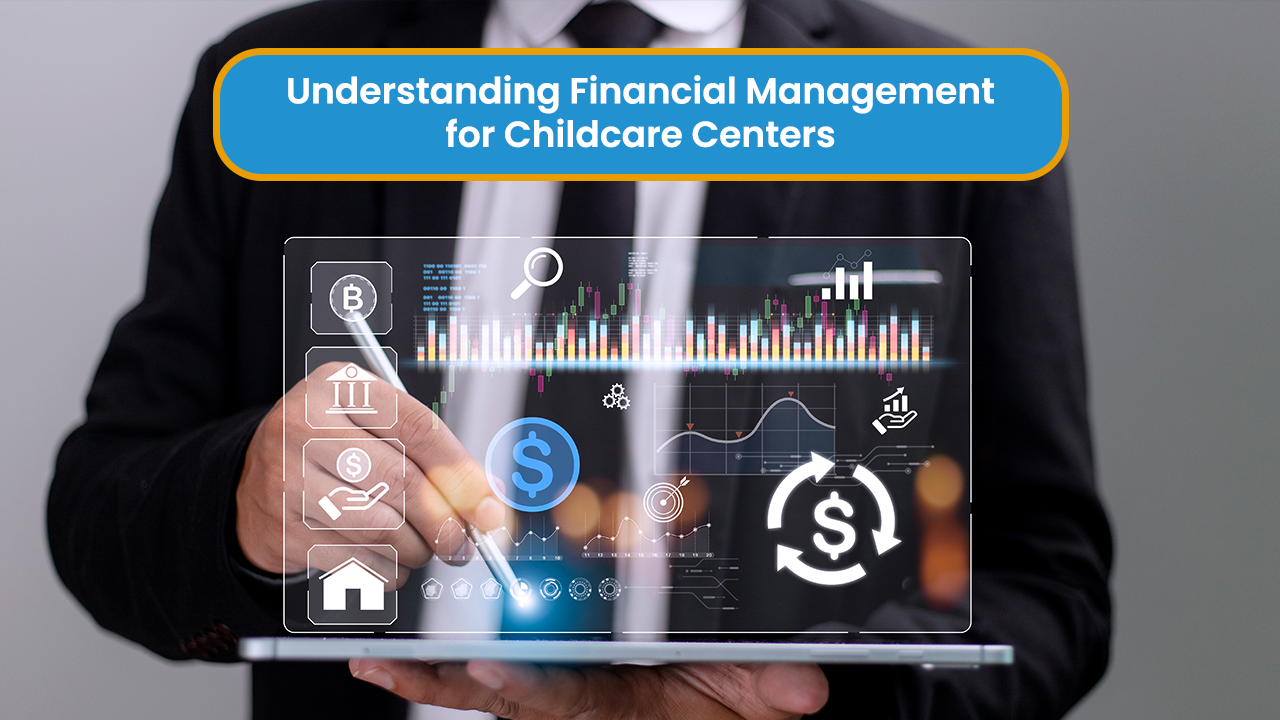
Running a childcare center involves more than caring for children; it also requires effective financial management. From budgeting to tracking expenses and planning for growth, managing finances is crucial for the sustainability and success of childcare businesses. In this blog, we’ll explore the critical aspects of financial management for childcare centers.
Understanding the Importance of Financial Management for Childcare Centers
Here are several reasons why financial management is crucial for childcare centers:
Resource Allocation:
Childcare centers require resources to function smoothly, including staff, facilities, educational materials, and supplies. Proper financial management ensures that these resources are allocated efficiently, maximizing their impact on the quality of care provided to children. By carefully budgeting and managing expenses, childcare centers can ensure that resources are available and used effectively.
Budgeting and Planning:
Creating a budget allows center administrators to anticipate expenses, plan for future investments, and set financial goals. Without a budget, centers may struggle to manage cash flow effectively, leading to economic instability and potential service disruptions. By establishing a budget and regularly reviewing financial performance, childcare centers can make informed decisions that support their long-term viability.
Meeting Regulatory Requirements:
Childcare centers are often subject to various regulations and licensing requirements, which may include financial reporting obligations. Maintaining accurate financial records and demonstrating fiscal responsibility are essential for compliance with these regulations. Failure to meet regulatory requirements can result in penalties, fines, or even closure, underscoring the importance of effective financial management in ensuring legal compliance.
Ensuring Financial Stability:
Just like any other business, childcare centers face financial risks and uncertainties. From fluctuations in enrollment to unexpected expenses, numerous factors can impact a center’s economic stability. Effective financial management involves identifying and mitigating these risks by building reserves, diversifying revenue streams, or implementing cost-saving measures. By proactively managing financial risks, childcare centers can better weather economic downturns and other challenges.
Transparency and Accountability:
Parents, staff, donors, and regulatory agencies are vested in childcare centers’ financial health. Transparent financial management practices, such as regular financial reporting and disclosure, build trust and confidence among stakeholders. They demonstrate accountability and reinforce the center’s commitment to responsible stewardship of financial resources. Additionally, transparent financial management can attract donors and supporters who want to ensure their contributions are used effectively.
Strategies for Financial Management for Childcare Centers
Here are several key strategies for financial management in childcare centers:
Implement a Comprehensive Budgeting Process:
Developing a detailed budget is the foundation of financial management for childcare centers. Start by identifying all sources of income, such as tuition fees, government subsidies, grants, and donations. Then, meticulously estimate expenses across categories like staffing, facility maintenance, utilities, supplies, and administrative costs. A well-crafted budget clarifies revenue expectations and ensures expenditures align with available resources.
Monitor Cash Flow Regularly:
Cash flow management is critical for childcare centers to meet financial obligations and maintain operational stability. Monitor cash inflows and outflows regularly to identify any discrepancies or potential cash flow gaps. By staying vigilant and proactive, childcare centers can make informed decisions to optimize cash flow and avoid liquidity issues.
Control Costs Wisely:
Managing expenses effectively is crucial for optimizing financial resources and sustaining profitability. It’s imperative to pinpoint areas where costs can be trimmed without compromising the standard of care. This might entail renegotiating contracts with suppliers, fine-tuning staffing levels for efficiency, adopting energy-efficient practices, or delegating non-essential tasks externally. Consistently scrutinizing expenditures enables the identification of opportunities for cost reduction and ensures the streamlined utilization of resources.
Diversify revenue streams:
Relying solely on tuition fees can make childcare centers vulnerable to fluctuations in enrollment or changes in economic conditions. Diversifying revenue streams can provide stability and additional sources of income. Explore opportunities to offer additional services, such as after-school programs, summer camps, or educational workshops. Consider seeking partnerships with local businesses or organizations to sponsor events or provide funding for specific initiatives.
Invest in Staff Development:
Investing in staff training and development enhances the quality of care and boosts employee morale and retention. Well-trained staff are better equipped to meet the evolving needs of children and families, leading to higher satisfaction levels and improved outcomes. Allocate resources for ongoing professional development, certifications, and training programs to empower staff and promote continuous learning.
Plan for Long-Term Sustainability:
Childcare centers should have a clear vision for their long-term sustainability and growth. They should develop strategic plans that outline goals, objectives, and initiatives to support the center’s mission and objectives. They should also set aside funds for future investments, such as facility upgrades, equipment purchases, or expansion projects. By planning and investing wisely, childcare centers can position themselves for continued success and impact in the community.

5 ways to Budget in Financial Management for Childcare Centers
Budgeting is a fundamental aspect of financial management for childcare centers. Here’s how to create and manage a budget effectively:
Assess income sources:
The first step in budgeting for a childcare center is to assess all sources of income. This typically includes tuition fees paid by parents, government subsidies or grants, donations from supporters or sponsors, and revenue from additional services or programs the center offers. By understanding the available sources and amounts of income, childcare center administrators can establish a baseline for budgeting purposes.
Estimate Expenses:
Once income sources have been identified, the next step is to estimate expenses. Childcare centers have various expenses, including staffing, facility rent or mortgage payments, utilities, insurance, supplies, equipment, and administrative overhead. It’s essential to break down expenses into categories and estimate the required amounts, considering fixed costs (e.g., rent) and variable costs (e.g., supplies).
Set realistic goals.
Setting realistic financial goals is crucial for guiding the budgeting process. These goals may include maintaining a certain level of savings, investing in staff training or professional development, upgrading facilities or equipment, or expanding programs or services. By establishing clear and achievable goals, childcare center administrators can prioritize spending and allocate resources accordingly.
Create a budget:
Childcare centers can create a comprehensive budget by assessing income sources, estimating expenses, and setting financial goals. The budget should detail projected income and expenses for a specific period, such as a month, quarter, or year. It should allocate funds to various expense categories while ensuring total costs do not exceed total income. Creating a budget helps childcare centers plan and manage their finances effectively, providing a framework for decision-making and resource allocation.
Monitor and Adjust:
Childcare center administrators should regularly compare income and expenses against the budgeted amounts, identifying discrepancies or variances. By monitoring financial performance regularly, childcare centers can identify areas where adjustments may be needed, such as cutting costs, increasing revenue, or reallocating resources. Flexibility and adaptability are vital to maintaining financial stability and meeting the center’s goals and objectives.
Conclusion on Financial Management for Childcare Centers
Financial management is essential for the success and sustainability of childcare centers. By implementing effective budgeting strategies and adopting sound financial management practices, childcare center owners and administrators can ensure the availability of resources, maintain financial stability, and achieve their goals of providing quality care and education to children. Learn also about daycare financial management best practices.


